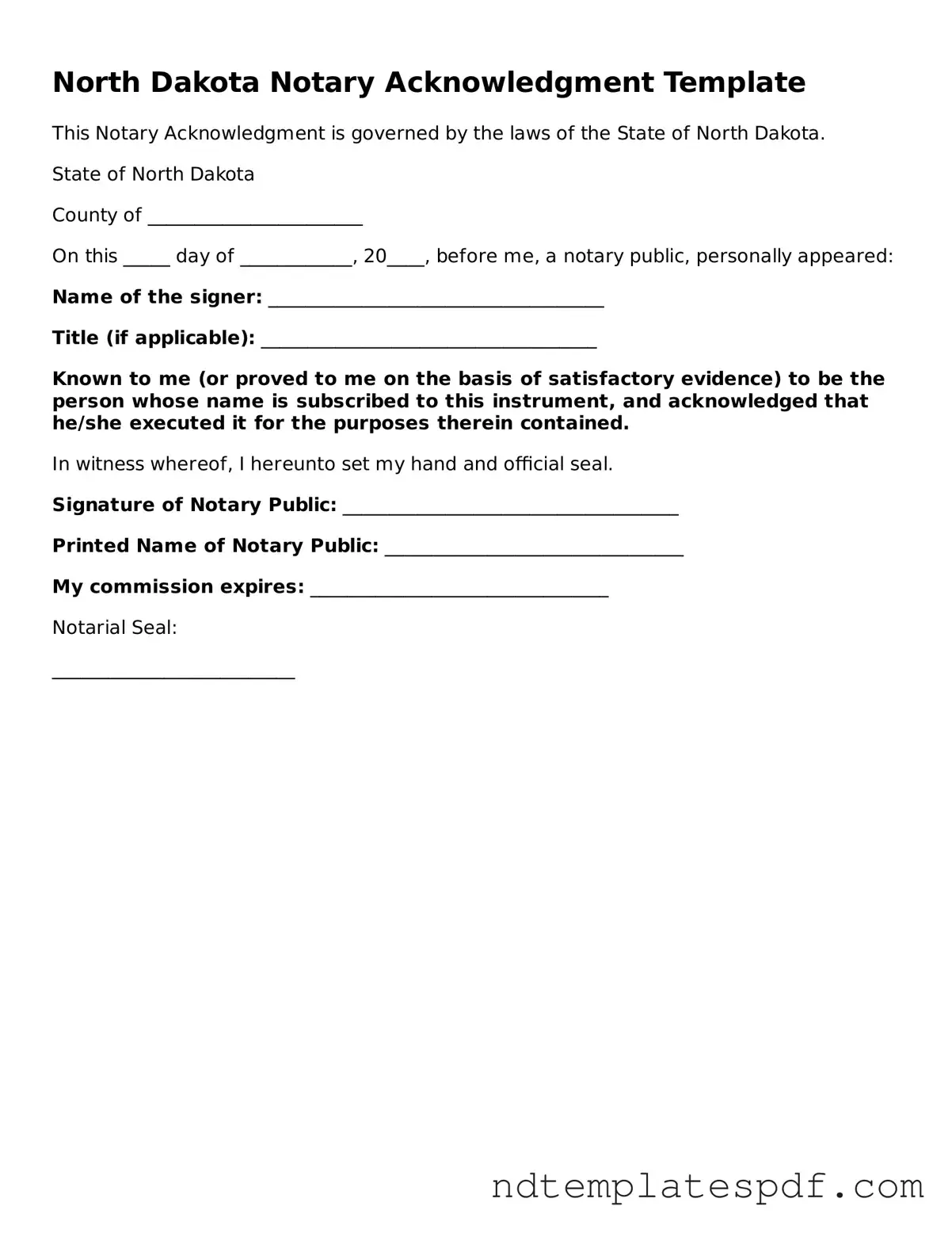Detailed Steps for Using North Dakota Notary Acknowledgement
After you have gathered the necessary information and documents, you can proceed to fill out the North Dakota Notary Acknowledgement form. This form is important for verifying signatures and ensuring that the proper procedures are followed. Completing it accurately will help facilitate the notarization process.
- Begin by obtaining a copy of the North Dakota Notary Acknowledgement form.
- In the first section, enter the name of the person who is signing the document. This should be the individual whose signature will be notarized.
- Next, provide the date on which the acknowledgment is being made. This is typically the date you are filling out the form.
- In the space provided, write the name of the notary public who will be performing the acknowledgment. Ensure that the name matches the notary’s official identification.
- Include the county where the notarization will take place. This is where the notary is commissioned.
- Have the signer personally appear before the notary. The notary must witness the signature being made on the document.
- Once the signer has signed, the notary will complete the acknowledgment section. This includes signing the form and adding their official seal.
- Review the completed form to ensure all information is accurate and legible.
After filling out the form, keep it safe along with the document that was signed. It may be required for future reference or legal purposes.
